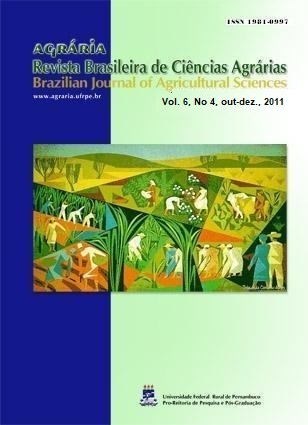Ultrasonographic evaluation of forelimb flexor tendons in vaquejada horses
DOI:
https://doi.org/10.5039/agraria.v6i4a1157Keywords:
Horses, hypertrophy, ligament, ultrasonographyAbstract
The goal of this study was to evaluate ultrasonographically the mediolateral (DML) and dorsal-palmar (DDP) diameter of the flexor tendons in vaquejada horses that run from right or from left. From the 33 animals included in the experiment, 16 ran from right and 17 from left. Measurements were made on the IB (4-8 cm distal to the accessory carpal bone), IIB (12-16 cm distal to the accessory carpal bone) and IIIB (20-24 cm distal to the accessory carpal bone) zones of the superficial digital flexor tendon (TFDS) and deep digital flexor tendon (TFDP), using an ultrasound device coupled to a multifrequency linear transducer. Resultsshow that the type of training (running right or left) induces a significant difference (P < 0.05) in the DML and DDP measures
between antimeres, with difference ranging from 1.14% (DDP of TFDP, IIIB zone, in horses that run from right) to 19.17% (DDP of TFDP, IB zone, in horses that run from left), and that animals that run from right presented greater hypertrophy in the flexor tendons of the left forelimb, and vice versa. It can be concluded that vaquejada horses present significant differences between antimeres on DML and DDP of intact forelimb flexor tendons, with higher hypertrophy on the support limb, which could result in false-positive ultrasonographic diagnosis of subclinical tendonitis.



